How to Make a Large Wooden Serving Board With a Handle
I love a good charcuterie board. It’s my go-to when hosting any size crowd.
But so many wooden serving boards are too small for the job. At least if you want to do it up right.
So I decided to make my own!
In this post, I’m going to show you how to make an extra-large wooden serving board with a handle, perfect for creating the ultimate charcuterie board. This simple tutorial is great for any level of DIYer.
Pin for later!

This post contains some affiliate links for your convenience. Click here to read my full disclosure policy. Thanks for supporting Bloom in the Black!
How to Make a Wood Serving Board
To make an extra-large serving board, you’ll simply cut three lengths of wood, glue them together, then sand and stain with a food-safe finish.
You can also make a footed tray using the techniques I’m about to share with you.
Materials and Tools
Step 1: Cut boards to size

Using either a miter saw or a hand saw, cut two 26″ lengths from the 1 x 8 board, and one 30.5″ length from the 1 x 3 board. You can adjust these lengths based on the size of the charcuterie board you want to make.
Lay your boards together to ensure you like the serving board’s handle length and decide the wood arrangement to use for the most attractive look.

For example, I liked having the large knot closer to the center of the board rather than the edge, so I arranged my wood like this.
Step 2: Glue the long edges together
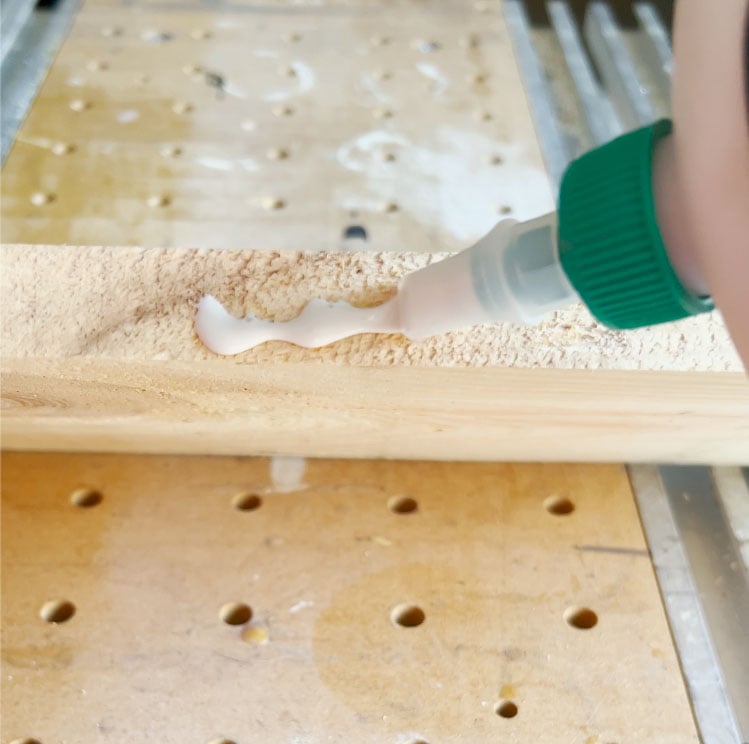
Run a bead of waterproof wood glue along the long edges of the board and smooth with your fingers to cover the surface. Since this is end grain, be sure not to skimp on the amount of glue since a lot will be absorbed.
Working quickly, one board at a time, assemble the boards into the design you settled on in the last step.
Step 3: Clamp boards
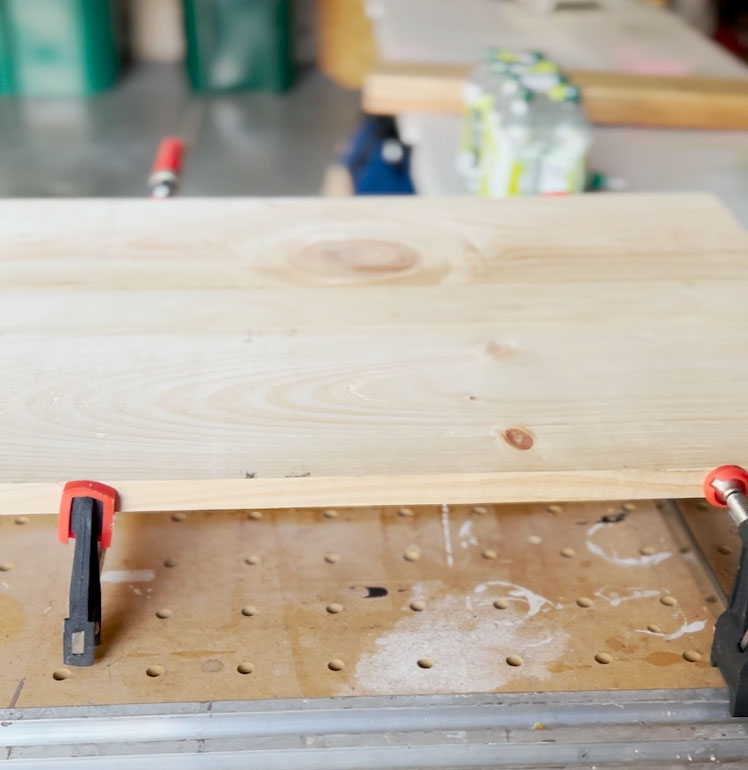
Clamp your assembled boards together and allow them to dry overnight. Be sure to wipe up any excess wood glue that squeezes through the cracks.
You have a five-minute window before the glue sets up to adjust the board alignment, so if anything shifts once you clamp, fix it quickly!
Step 4: Sand your serving board
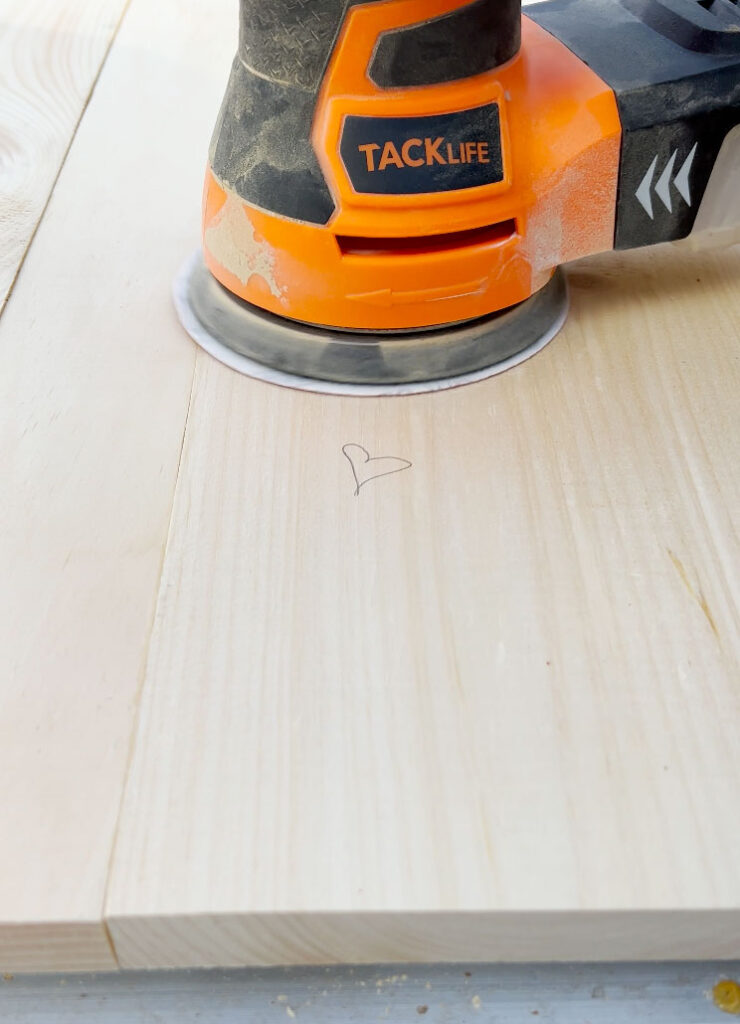
Working through multiple grits of sandpaper, sand the wooden breadboard smooth. Don’t skimp on this part because sanding thoroughly will take this DIY project to a professional-looking level.
Sand in steps with a 60, 80, 120, 180, and 220 grit sandpaper. Each level will go a little faster than the last so don’t worry if this looks overwhelming!
This set of sandpaper is a phenomenal deal and contains every grit you’d ever need.

During the 60 grit and 220 grit steps, use your sander to rustically round off the edges of the serving board. Imperfect is best here to give the charcuterie board a vintage look.
Step 5: Stain the board with a food-safe finish
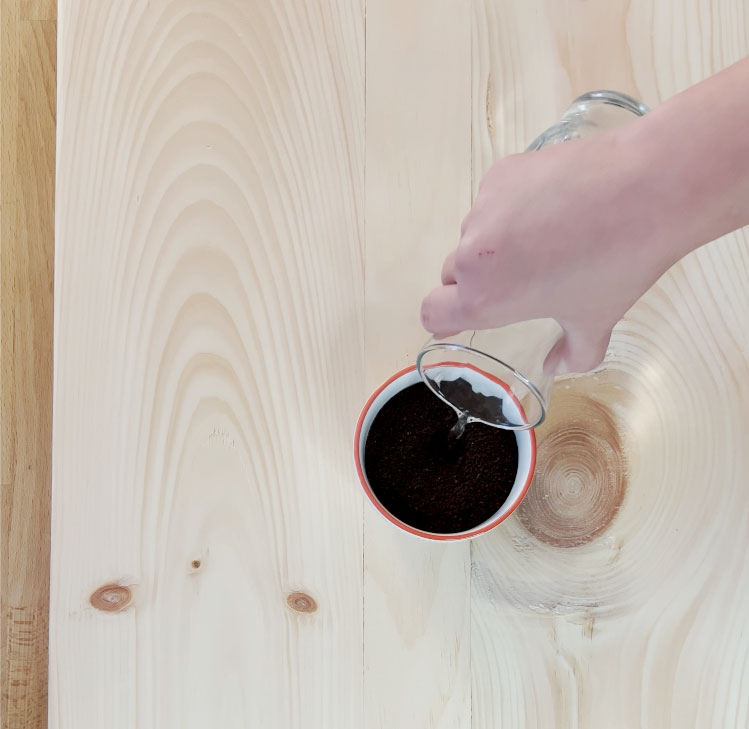
Because there will be food served on this board, we need to be sure that the finish is entirely food safe. While there are commercial stains and finishes that will work — this article has some helpful information on food-safe wood finishing — they generally take a month to cure. Pass!
So we’re going to use coffee!
Sounds weird, I know, but it works beautifully, is 100% food safe, and is cheap as heck.
Scoop 2 or 3 generous tablespoons full of ground coffee into a small bowl and combine with just enough water to create a gritty paste.
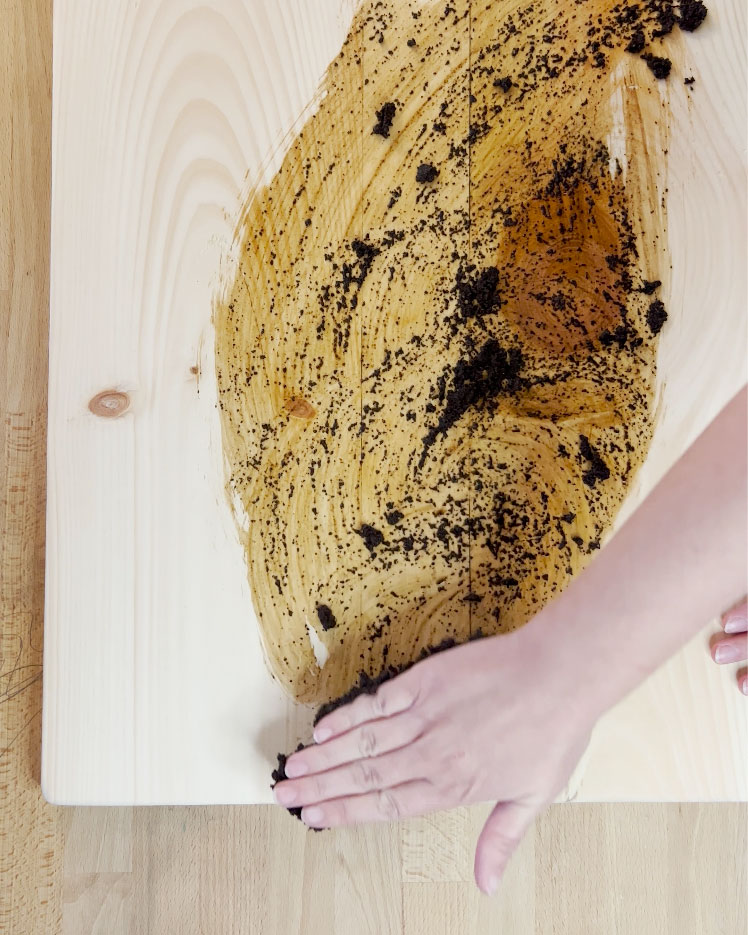
Dump the coffee paste onto your wooden serving board and rub it into the entire surface. Allow it to sit for 15 minutes.
Your hands will be weirdly smooth after this process 🙂

Once the 15 minutes are up, wipe the coffee grounds away with a paper towel. You’ll see that the coffee has stained the pits and crevices a much deeper shade of brown, giving this wooden serving board a beautiful vintage patina.
Step 6: Condition the wood

Squirt a generous amount of butcher block conditioner or food-grade mineral oil onto the board and rub it in with a lint-free rag. I like this butcher block conditioner the best.
Allow the oil to soak in overnight, then buff with a rag. You’ll be shocked at how much the wood soaks up!
This serving board makes an amazing hostess gift! For more creative hostess gift ideas, check out this post.

This extra-large wooden serving board (with a handle!) uses only about $10 worth of wood and looks like it costs 10 times that much. A vintage-style charcuterie board like this would make a beautiful gift!
Or just plain would look beautiful on your counter 😉
Want more? Here’s the full collection of Bloom in the Black DIYs.
How to Care for Your Wood Serving Board
To keep your wooden serving board protected and looking good, coat with a generous layer of butcher block conditioner or food-grade mineral oil whenever the wood starts looking a little dry or blotchy. Wash gently as needed with warm soapy water, but never submerge fully.
When serving food on your vintage breadboard, I highly recommend using a sheet of parchment paper between the food and the board. This will allow for super easy clean-up and minimal washing. In addition, while the board is perfectly food-safe, pine can sometimes transfer a slightly resinous taste to moist foods if resting directly on the wood.
Frequently Asked Questions About Wood Serving Boards
What’s the difference between a serving board and a cutting board?
The purpose of a cutting board is simply to act as a surface to cut food, whereas a serving board is intended to serve an attractive display of food or to be used as a decorative kitchen accent.
What is a serving board used for?
A serving board is generally used to serve a variety of snackable foods, like a charcuterie spread or a nibble tray. These boards can also be used to hold a selection of bread and deli meat for a sandwich board or as a base to corral several serving dishes. Basically, it’s the ultimate entertaining piece for your serveware collection!
What kind of wood do you use for a charcuterie board?
A closed grain hardwood like cherry, maple, walnut, acacia, olive, or beech makes excellent charcuterie boards. However, these woods are somewhat expensive and harder to cut. Pine is suitable for a decorative or light use serving board and is an easier to work with, more affordable wood option.
Can you stain a serving board?
Technically yes, you can stain a serving board. However, I don’t recommend using a commercial stain and finish. The stain would likely become uneven and damaged over time with frequent use. The coffee method I used in this tutorial is a great solution, but if you want to learn more about wood stains and food safety, this article is very helpful.
